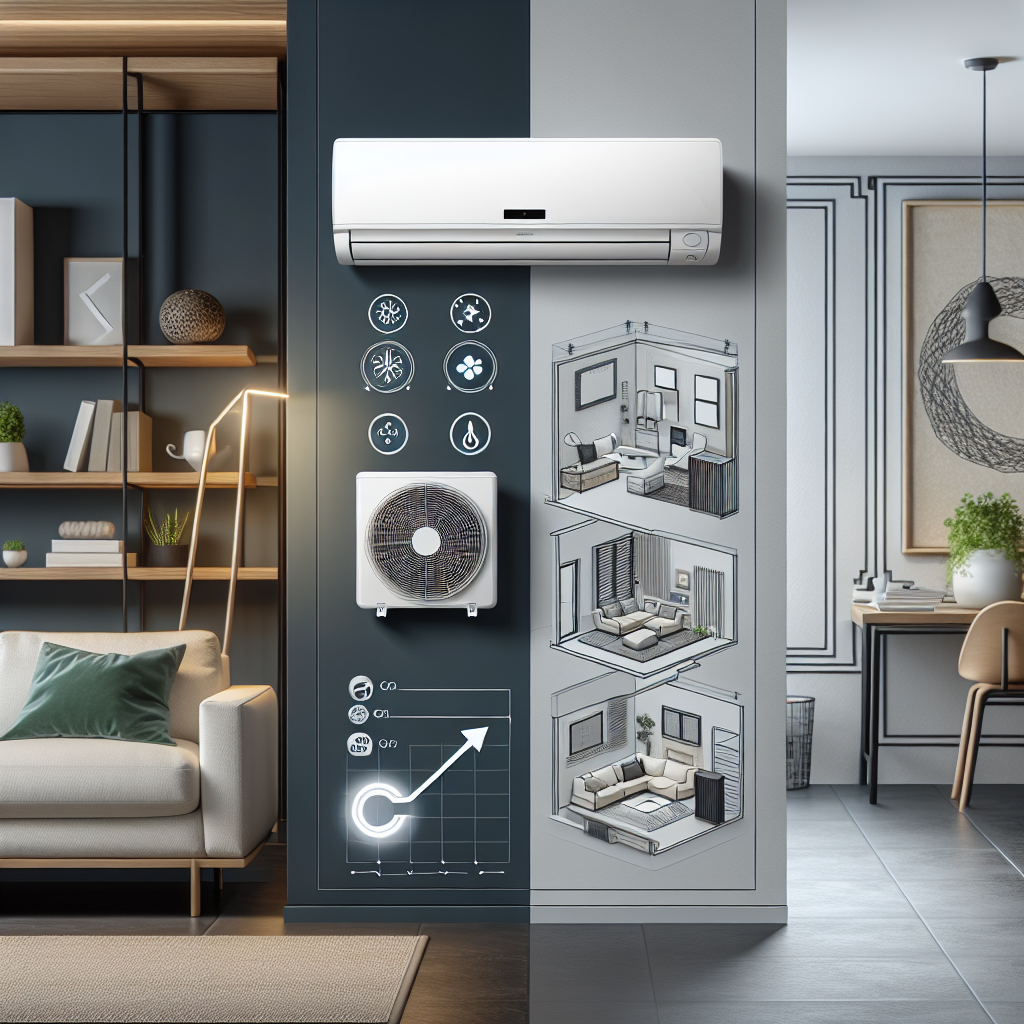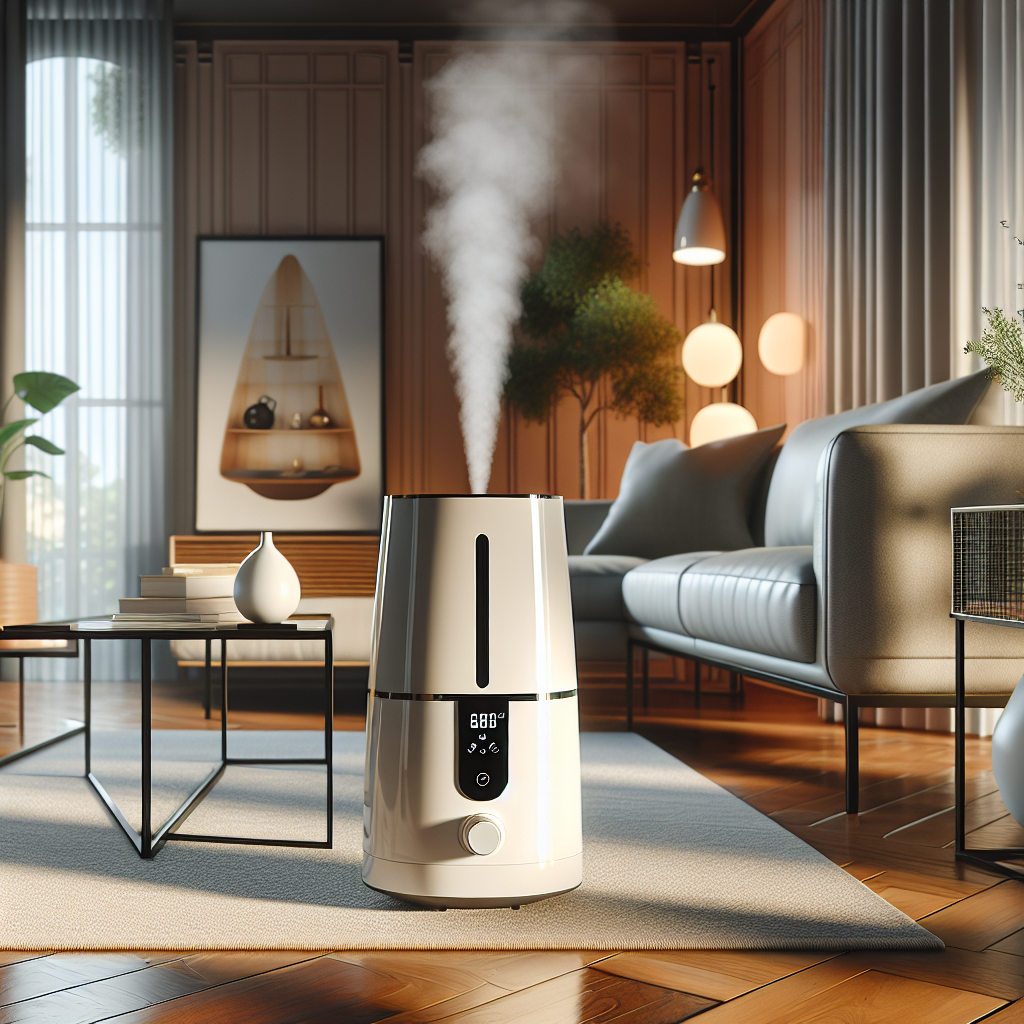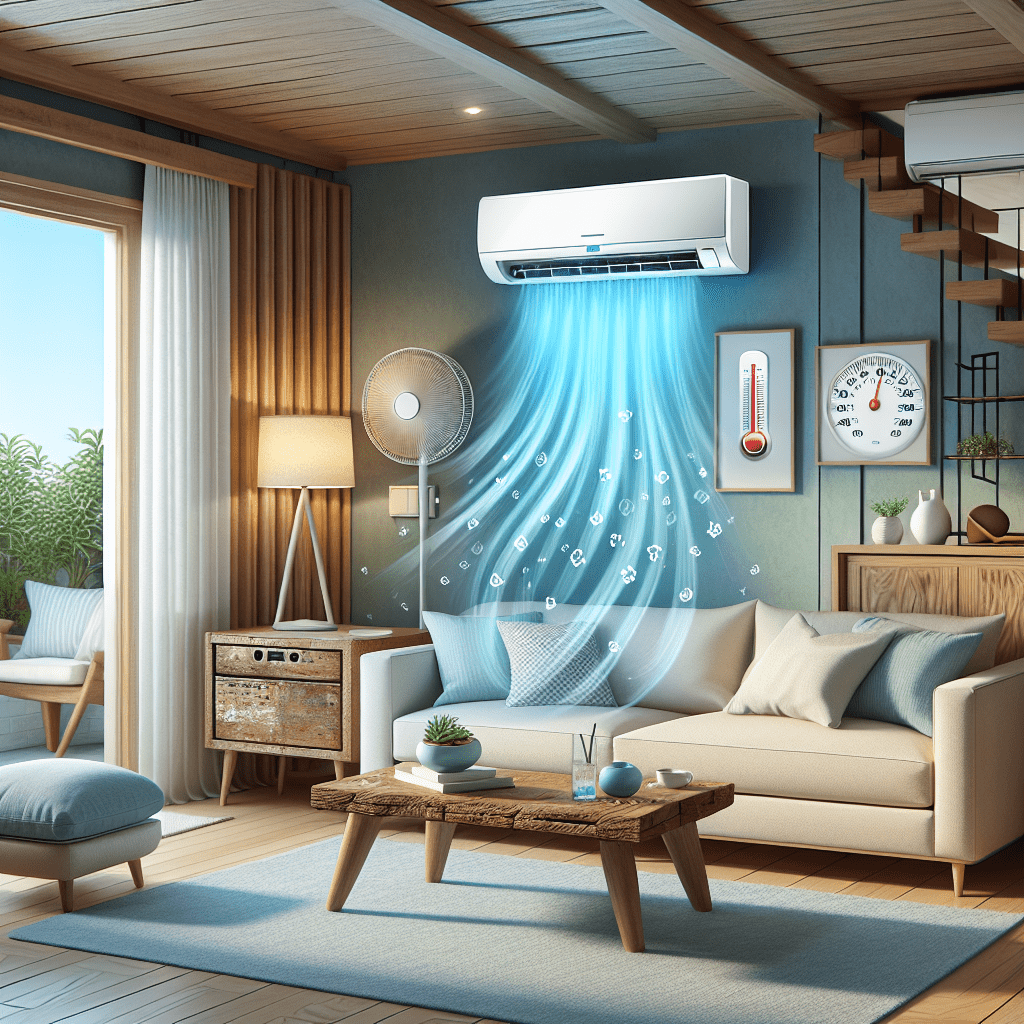Is a Split AC System Right for Your Home? Benefits and Installation Guide
Introduction to Split Unit Air Conditioning Systems
If you’ve ever found yourself sweltering in the summer heat while perusing different air conditioning options, you might have come across the term split unit air conditioning system. No, it’s not something an accountant would use to split costs; rather, it’s a highly efficient way to cool your home. These systems are often referred to as ductless air conditioners, and they offer a range of benefits that can make them the perfect fit for various residential and commercial settings.
To put it simply, a split unit air conditioning system is composed of two main components: an indoor unit and an outdoor condenser. The indoor unit is often wall-mounted and tasked with delivering cool air into your living space, while the outdoor condenser works its magic outside. This separation allows for a more streamlined installation process without the need for bulky ductwork.
Why Choose a Split Unit?
- Energy Efficiency: Split units like ductless mini splits are known for their high SEER ratings (Seasonal Energy Efficiency Ratio). This means they use less energy to provide the same amount of cooling as traditional systems.
- Zoned Cooling Benefits: With options like single-zone and multi-zone mini splits, you can customize the temperature in different areas of your home. It’s like having your cake and eating it too, except this time it’s climate control!
- Quiet Operation: Unlike some older models that roar like lions on mating calls (yikes!), modern split units are quiet—so quiet that you’ll wonder if they’re even on.
- Improved Indoor Air Quality: Equipped with advanced filtration systems, these units can help remove pollutants from the air, offering relief to allergy sufferers.
- Sleek Design and Flexibility: With options ranging from ceiling cassette mini splits to wall-mounted indoor units, you’ll find something that fits your aesthetic needs.
A split unit isn’t just about providing energy-efficient cooling; it’s about enhancing comfort features in HVAC systems for modern homes. With smart capabilities, such as programmable thermostats and adjustable fan speeds, these systems offer personalized comfort at your fingertips. Not only do they excel in cool settings, but many models also include heat pump systems for year-round climate control.
The next question you’re probably pondering is how installation works. Fear not! Our team at Lehigh Valley HVAC Pros specializes in seamless installation services, ensuring your new system is up and running without a hitch. Whether you’re upgrading an existing setup or building from scratch, consider a split unit for a cost-effective cooling solution that’s both eco-friendly and future-proof.
Understanding Split Unit Air Conditioning Systems
When the summer heatwave hits, and your house turns into a sauna, a split unit air conditioning system might just be your saving grace. But what exactly is this magical contraption that’s keeping homes cool and energy bills low? Let’s dive into the world of split AC systems and discover why they are a popular choice for homeowners.
The Anatomy of a Split System
A split unit air conditioning system, also known as a ductless air conditioner, consists of two main components:
- Indoor Unit: This is typically wall-mounted and contains the evaporator coil. Its sleek design ensures it blends seamlessly with your home décor while efficiently cooling specific areas.
- Outdoor Condenser Unit: Located outside, this component houses the compressor and condenser coil, working diligently to dissipate heat from your home.
Together, these units collaborate like old dance partners—each knowing its role in maintaining optimum comfort levels indoors.
The Cool Benefits
- Zoned Cooling: With a split AC system, you can enjoy zoned cooling, which allows you to control temperatures in different rooms independently. No more family squabbles over the thermostat!
- Energy Efficiency: These systems generally boast high SEER ratings (Seasonal Energy Efficiency Ratio), indicating their superior energy efficiency compared to traditional central air systems.
- No Ductwork Needed: Say goodbye to costly duct installations! Split units operate without ductwork, making them ideal for homes without existing ducts or for additions where extending ducts isn’t feasible.
- Sleek and Quiet: Known for being a whisper-quiet air conditioner, split systems ensure your sleep remains undisturbed—unless you’re dreaming of ice cream trucks in July.
A Nod to Technology: Inverter Technology AC
The incorporation of inverter technology in these systems allows for variable speed compressors. This means they can adjust their output continuously rather than cycling on and off like traditional units. The result? Enhanced indoor comfort and reduced energy consumption.
If you’re considering an installation or need advice on whether a mini-split system suits your home, don’t hesitate to explore our comprehensive range of mini-split installation and repair services.
The Eco-Friendly Angle
| Refrigerant Used | Description |
|---|---|
| R-410A* | This is the common refrigerant used, although more environmentally friendly options are emerging in the market. |
*Source: [ACHR News](https://www.achrnews.com/articles/146007-understanding-refrigerants-in-hvac-systems)
This shift towards eco-friendly refrigerants underscores the industry’s commitment to sustainability while ensuring high performance.
A well-installed split unit not only offers cost-effective cooling solutions but also enhances indoor air quality with advanced filtration systems. So whether you’re interested in upgrading your home comfort or simply curious about HVAC technologies, understanding these versatile systems is key. Who knew staying cool could be so fascinating?
Benefits of Split AC Systems
If you’re considering upgrading your home’s cooling system, a split unit air conditioning system might just be your new best friend. Imagine this: a hot summer day in Lehigh Valley and instead of sweating it out, you’re lounging comfortably in your perfectly cooled living room. Sounds dreamy, right? Here’s why split AC systems are worth all the hype and more:
1. Energy-Efficient Cooling
Split AC systems are celebrated for their energy efficiency. Thanks to advanced inverter technology, these units can adjust their cooling capacity based on the current room temperature, thus conserving energy and reducing electricity bills. According to the U.S. Department of Energy, ductless air conditioners can save up to 30% on cooling costs compared to traditional systems.
2. Flexible Installation Options
Unlike central HVAC systems that require complex ductwork, split units offer flexible installation options that cater to both residential and commercial settings. Whether you prefer a discreet ceiling cassette unit or a sleek wall-mounted AC unit, the choices are aplenty.
3. Zoned Cooling System
Tired of cooling rooms that nobody’s using? Enter zoned cooling! With multi-zone mini splits, you can customize the temperature in each room independently. This not only enhances comfort but also maximizes energy savings—no more chilling those empty guest rooms!
4. Improved Indoor Air Quality
The sophisticated filtration systems in modern split units help improve indoor air quality by removing dust, allergens, and pollutants. Some models even feature advanced filtration technologies capable of reducing bacteria and odors—a breath of fresh air for allergy sufferers.
5. Quiet Operation
If peace and quiet are what you crave, then you’ll love how these units hum along at barely a whisper (seriously!). The absence of noisy ductwork means split systems operate with minimal sound—a perfect choice for bedrooms or home offices where serenity is key.
6. Enhanced Comfort Features
- Programmable Thermostat: Schedule your cooling needs with precision.
- Smart Home Compatibility: Control your AC remotely using your smartphone—because who doesn’t love playing God with their gadgets?
- Adjustable Fan Speeds: Tailor the airflow to suit your comfort level.
The versatility and efficiency of split AC systems make them an excellent choice for homeowners looking to boost comfort without breaking the bank. Plus, with options like remote control functionality and smart home compatibility, staying cool has never been so convenient or fun!
The Installation Process of Split AC Systems
Installing a split unit air conditioning system might sound like a daunting task, but with the right expertise, it can be a real breeze. Let’s break down the process into digestible steps, so you know what to expect when bringing home that whisper-quiet, energy-efficient cooling wonder.
1. Planning and Assessment
First things first: an assessment of your home is crucial. A professional will evaluate your space to determine the best location for both the wall-mounted indoor unit and the outdoor condenser unit. Placement matters! Not only does it affect the cooling efficiency, but it also ensures even distribution of cool air throughout different zones in your house. Remember, creating a zoned cooling system is one of the key benefits of ductless air conditioners.
2. Mounting Indoor Units
This involves securing a mounting plate on your chosen wall. The indoor units are often sleek and compact—your walls will thank you for not having to support something akin to small refrigerators! The units are mounted at an optimal height to ensure effective air circulation, with adjustable fan speeds allowing for personalized comfort.
3. Installing Outdoor Condenser Unit
The outdoor compressor/condenser needs plenty of breathing room. It’s typically installed on a firm surface outside—be it on a concrete slab or attached to an exterior wall using secure brackets. This positioning helps maintain unobstructed airflow, which is vital for high-efficiency systems for homes and offices.
4. Connecting Refrigerant Lines
This is where the magic happens—a narrow conduit containing power cables, refrigerant tubing, suction tubing, and a condensate drain links the indoor unit to its outdoor counterpart. It’s like connecting two old friends who haven’t spoken in years!
5. Electrical Connections
Your split system will need electrical connections for power supply and control wires for operation. This step requires precision because we’re talking about power here—a little mix-up could lead to unwanted drama!
6. Testing and Calibration
Once everything is set up, it’s time to turn it on and check if all systems are go! Calibration ensures that your mini split system delivers optimum performance with its inverter technology AC providing eco-friendly air conditioning options.
A Quick Tip: Periodic Maintenance is Key!
An often-overlooked aspect post-installation is regular maintenance of your split system. This involves cleaning filters, checking refrigerant levels, and ensuring all components function seamlessly—preventive care can save you from unexpected hiccups.
The installation process may seem intricate but remember: you’re one step closer to enjoying superior indoor air quality with enhanced comfort features in HVAC systems once it’s all set up!
Maintenance Tips for Longevity and Efficiency
Owning a split unit air conditioning system can be like adopting a pet — it thrives on love, attention, and regular check-ups. To ensure your ductless mini split performs at its best, here are some maintenance tips that will help you enjoy energy-efficient cooling for years to come.
1. Regular Cleaning is Key
Think of your wall-mounted AC unit’s filters as your home’s lungs. They need to breathe to work efficiently! Regularly cleaning or replacing filters not only improves indoor air quality, but also boosts the system’s efficiency by up to 15%. A clean filter prevents dust and allergens from circulating in your home, making it a necessity rather than a luxury.
2. Inspect the Outdoor Condenser Unit
No one likes a clogged outdoor condenser unit—it’s like trying to run with mud in your sneakers. Ensure the area around your condenser is clear of debris, leaves, or grass clippings that could impede airflow. A simple garden hose rinse can often do wonders for keeping it clean.
3. Schedule Professional Maintenance
While DIY is great for many things (like making pancakes), there’s no substitute for professional AC installation services when it comes to annual check-ups. A certified technician can inspect components, check refrigerant levels, and ensure that all parts are functioning correctly. This proactive approach significantly reduces the risk of unexpected breakdowns.
4. Check and Clean Coils
The evaporator and condenser coils of your HVAC split system also need some TLC every year. Dirty coils reduce the unit’s ability to cool efficiently and consume more energy — think of them as unkempt hair on picture day! Gently dusting these components can improve efficiency by up to 20%.
5. Utilize Smart Controls
If you’re not using a programmable thermostat yet, it’s time to embrace technology smarter than having two left feet at a dance-off! Programmable thermostats not only help maintain consistent temperatures but also optimize energy use when you’re away from home.
Your mini split installation and repair service experts at Lehigh Valley HVAC Pros are here to assist in keeping your unit running smoothly throughout its lifetime. So give your split AC a little TLC today—after all, happy AC equals happy home!
Quick Fact: According to the U.S. Department of Energy, maintaining an HVAC system properly can lower heating and cooling costs by up to 30% annually!
Catering to Diverse Needs: Residential vs Commercial Split Units
When it comes to choosing a split unit air conditioning system, it’s essential to understand that not all systems are created equal. Whether you’re a homeowner looking for an efficient cooling solution or a business owner aiming to maintain a comfortable environment for your employees and customers, there are different types of split AC units tailored specifically for residential and commercial use. So, how do these systems differ, and which one is right for you? Let’s delve into the specifics!
Residential Split Units: Comfort in Every Corner
For homeowners across Lehigh Valley seeking an energy-efficient cooling solution, residential split units are a popular choice. These systems consist of an indoor wall-mounted unit and an outdoor condenser unit. A key benefit of residential split units is their ability to provide zoned cooling, allowing different rooms to be cooled individually based on your preferences.
- Energy-Efficient Cooling: With inverter technology ACs, residential split units adjust the compressor speed according to the required room temperature, which significantly reduces energy consumption.
- Enhanced Indoor Air Quality: Many models come equipped with advanced filtration systems that help in removing allergens and dust particles from the air.
- Quiet Operation: Say goodbye to that noisy window unit! Residential split units operate quietly, ensuring no disturbance during your Netflix binge or afternoon nap.
- Aesthetically Pleasing: Their compact design makes them less obtrusive in your living space—no more bulky fixtures ruining your home’s aesthetic!
Commercial Split Units: Robust Solutions for Businesses
If you’re running a business in Lehigh Valley, maintaining an optimal indoor climate is crucial not just for comfort but also productivity. Commercial split units offer robust cooling capacity suitable for larger spaces like retail stores or office buildings.
- Larger Coverage Area: Capable of handling larger spaces with ease, commercial split units ensure consistent cooling across vast areas without any hot spots.
- Multi-Zone Mini Splits: Allow businesses to create different zones with varying temperatures—a lifesaver during those office thermostat wars!
- High Durability: Built with sturdier components compared to residential models, they’re designed to withstand constant use without compromising performance.
- Savings on Energy Bills: Similar to their residential counterparts, these systems often feature high SEER ratings which translate into cost-effective cooling solutions over time—because who doesn’t love saving money?
No matter the application—residential or commercial—opting for the right type of HVAC split system can make all the difference in comfort and efficiency. To explore more about tailored solutions or installation services in Lehigh Valley, check out our detailed guide on minisplit installation services.
The Future of Comfort: Smart Home Compatibility
Welcome to the age of intelligent living, where your air conditioning system is not just a cooling device, but a smart companion that integrates seamlessly with your lifestyle. The modern split unit air conditioning system has evolved to embrace cutting-edge technology, making it an integral part of the smart home ecosystem. If you’re wondering whether this is just another tech gimmick, rest assured—it’s not. It’s an innovative leap towards enhanced comfort and energy efficiency.
Why Smart Compatibility Matters
Imagine controlling your mini split system from anywhere in the world with just a swipe on your smartphone. This isn’t a futuristic fantasy; it’s today’s reality. Smart home-compatible AC units come with features that allow you to:
- Remote Control: Adjust temperature settings, turn the unit on or off, and monitor system performance no matter where you are.
- Energy Management: Save energy by scheduling when your AC should run, optimizing energy use while maintaining comfort.
- Zoned Cooling: With multi-zone mini splits, personalize temperatures for individual rooms right from an app.
The Role of Inverter Technology in Smart Systems
A key technological advancement that complements smart capabilities is inverter technology. Unlike traditional systems that operate on a start-stop cycle, inverter-equipped systems constantly adjust their output to maintain the desired temperature efficiently. This not only enhances comfort but also reduces energy consumption significantly—a perfect match for smart homes prioritizing sustainability and cost-effective cooling solutions.
Integration with Other Smart Devices
The beauty of integrating your split unit air conditioning system within a smart home setup lies in its ability to communicate with other devices. For instance:
- The AC can work in tandem with your thermostat to adjust settings based on occupancy sensors or external weather conditions.
- Your voice-activated assistants like Amazon Alexa or Google Home can be used to give voice commands for added convenience.
- The system could potentially integrate with your security setup; imagine the peace of mind knowing your cooling will automatically shut off if smoke detectors trigger an alarm.
A Little Humor Goes a Long Way!
If you’ve ever had a conversation with your smart refrigerator because it told you you’re out of milk, then you’ll appreciate how talking to your air conditioner isn’t too far-fetched! Just remember—unlike some human relationships—the one with your smart AC might actually save you money!
The future of comfort lies in embracing these advanced technologies which are more than convenient—they’re transformative. So why settle for yesterday’s tech when you can step into tomorrow’s home today?
/ection<>







